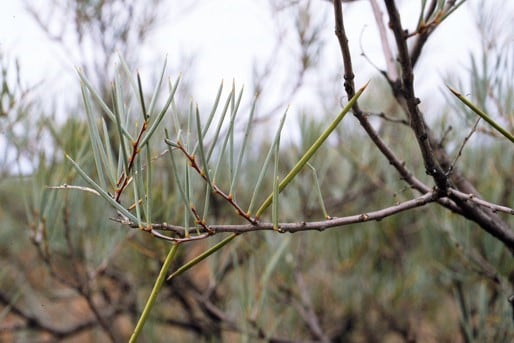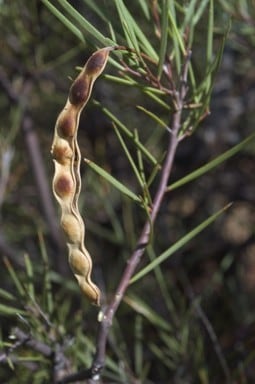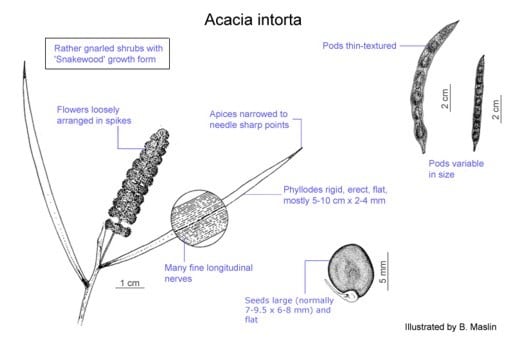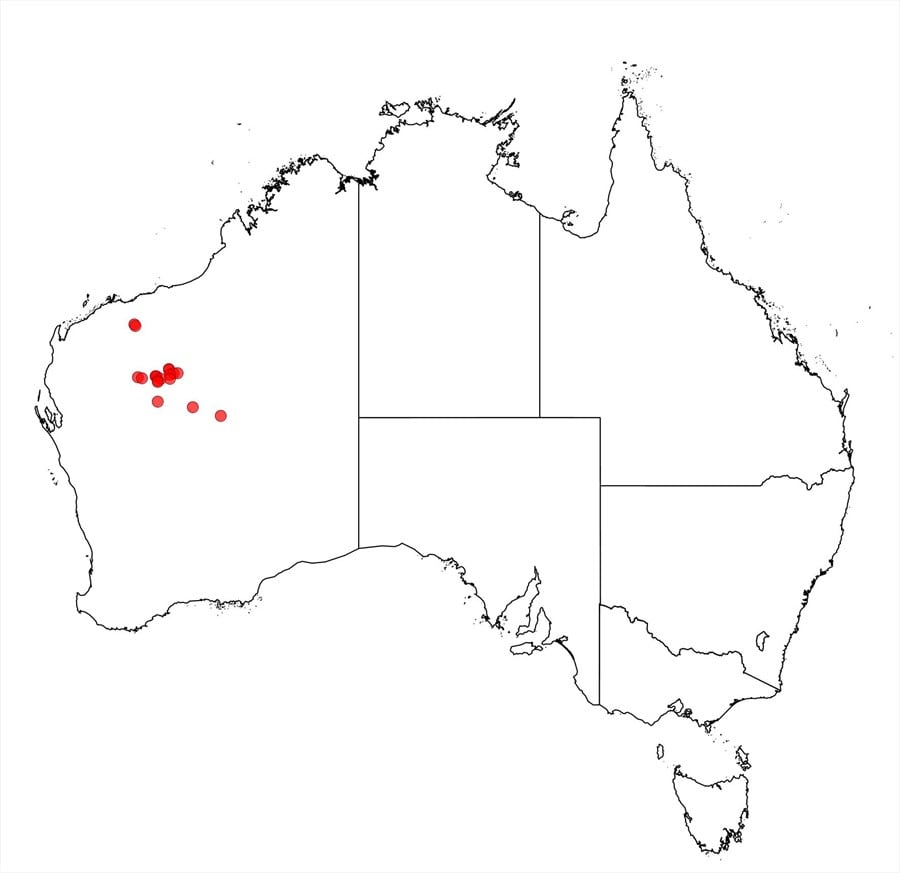Acacia intorta Maslin
WATTLE
Acacias of Australia
Common Name
Narrow-phyllode Snakewood
Family
Fabaceae
Distribution
Occurs in NW W.A. mainly in the upper reaches of the Ashburton R. between Bulloo Downs Stn and Mt Vernon Stn; there are outliers on Wongawol Stn near L. Carnegie and Mt Florance Stn in the Pilbara.
Description
Rather gnarled, rigid shrub or tree 1.5–3 (–4) m high, main branches somewhat contorted and normally spreading horizontally. Bark fibrous, fissured, grey. Branchlets glabrous. Phyllodes erect, straight to shallowly incurved, usually terete or subterete, (4–) 5–10 (–12.5) cm long, (1.5–) 2–4 mm wide, apices drawn out into a needle sharp brown point, rigid, normally subglaucous, glabrous, indistinctly multistriate. Inflorescences rudimentary 1‑headed racemes with axes c. 0.2 mm long, often growing out; peduncles 5–15 (–20) mm long, glabrous or sparsely puberulous; spikes 1–3.5 (-5) cm long, not densely flowered, golden. Flowers 5-merous; sepals 3/4-united or united into a ±truncate calyx. Pods narrowly oblong, flattened but rounded over seeds and not or only shallowly constricted between them, 4–9 cm long, 5–9 mm wide, firmly chartaceous, glabrous. Seeds longitudinal, elliptic to oblong or almost circular, (4–) 7–9.5 mm long, dark brown; funicle/aril small.
Phenology
Flowers May.–July., occasionally with pods in Oct.
Habitat
Grows in alkaline clay, on ridges, slopes and saline flats, in shrubland.
Specimens
W.A.: 27.4 km NW of Mt Vernon HS, J.S.Beard 6113 (PERTH); 32 km from Wongawol towards Carnegie Stn, A.R.Fairall 1944 (PERTH); c. 10 km NE of Tangadee HS, B.R.Maslin 5286 (CANB, PERTH).
Notes
A very rare, flat phyllode form with phyllodes to 4 mm wide is represented by B.R.Maslin 5286 from the type locality. At first glance it might be referred to A. xiphophylla or A. burrowsiana whose phyllodes are consistently flat, not sharply pungent and normally broader. The species is poorly collected and further material may clarify the unusually large variation in fruit size, as well as the frequency of the flat phyllode variant. The above three species have a distinctive ‘Snakewood’ growth form.
Related to A. sibina which differs in its non-gnarled habit, often longer phyllodes, shorter peduncles and denser spikes.
FOA Reference
Data derived from Flora of Australia Volumes 11A (2001), 11B (2001) and 12 (1998), products of ABRS, ©Commonwealth of Australia
Author
Edited by B.R.Maslin
R.S.Cowan
This identification key and fact sheets are available as a mobile application:
URL: https://apps.lucidcentral.org/wattle/
© Copyright 2018. All rights reserved.













